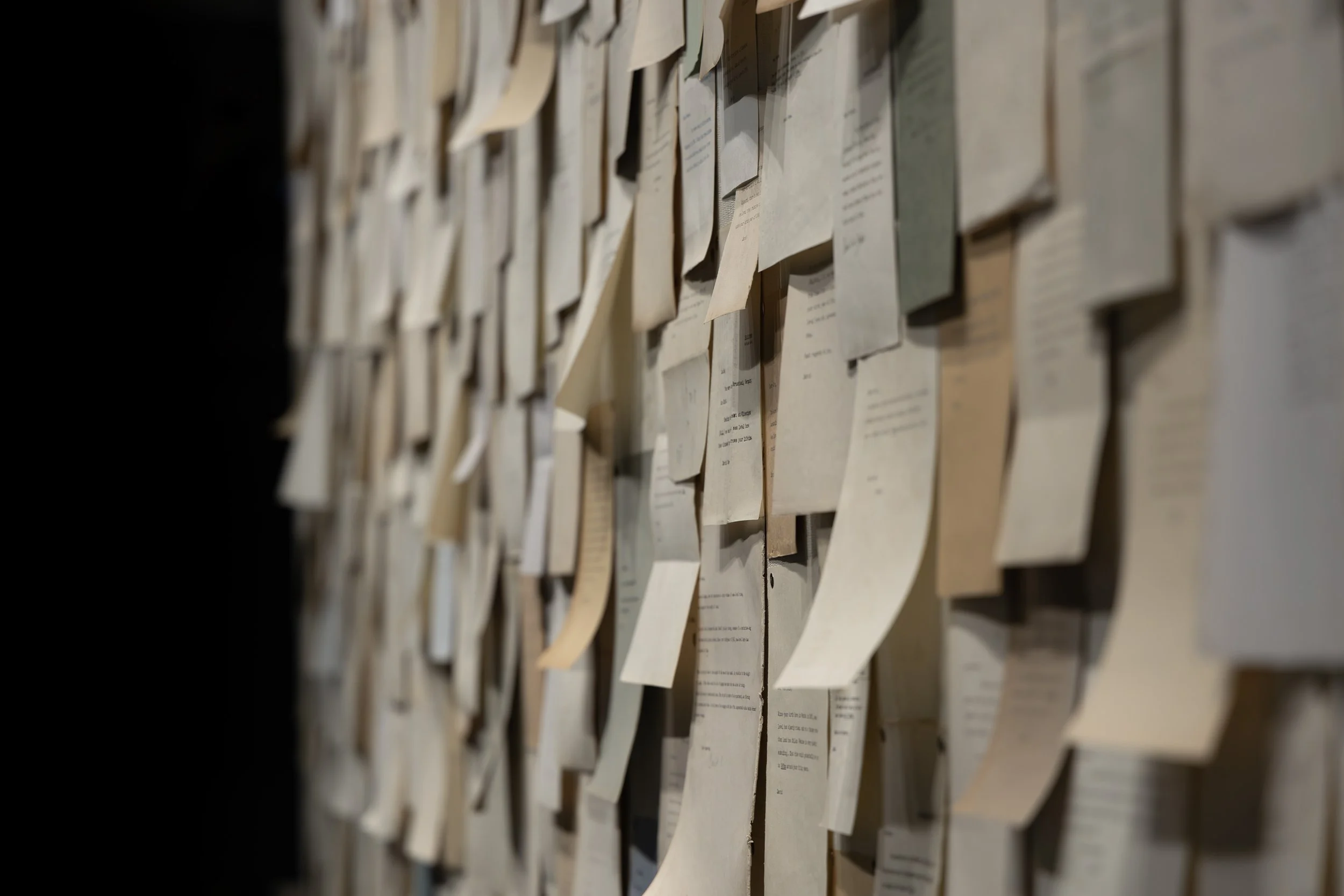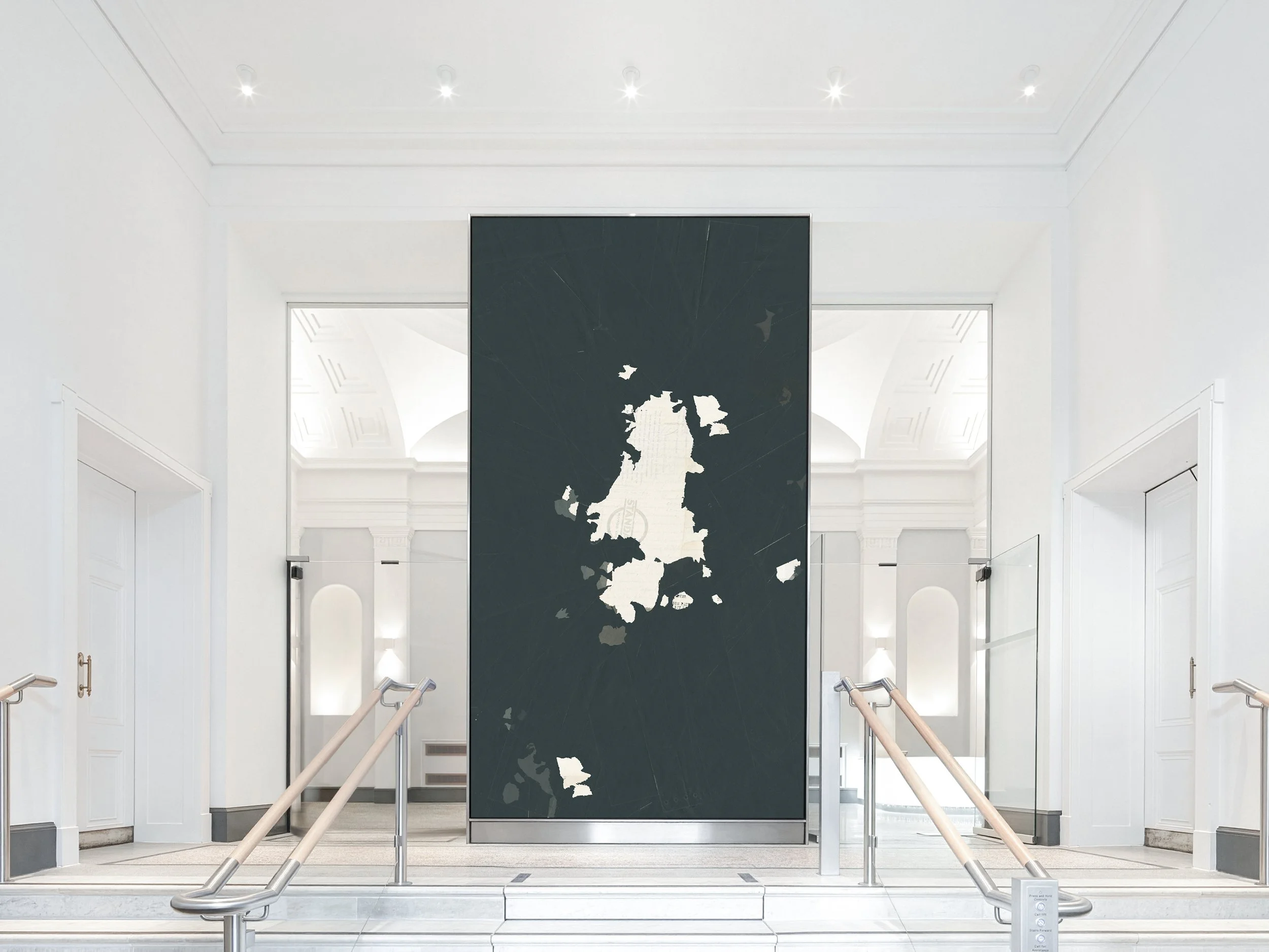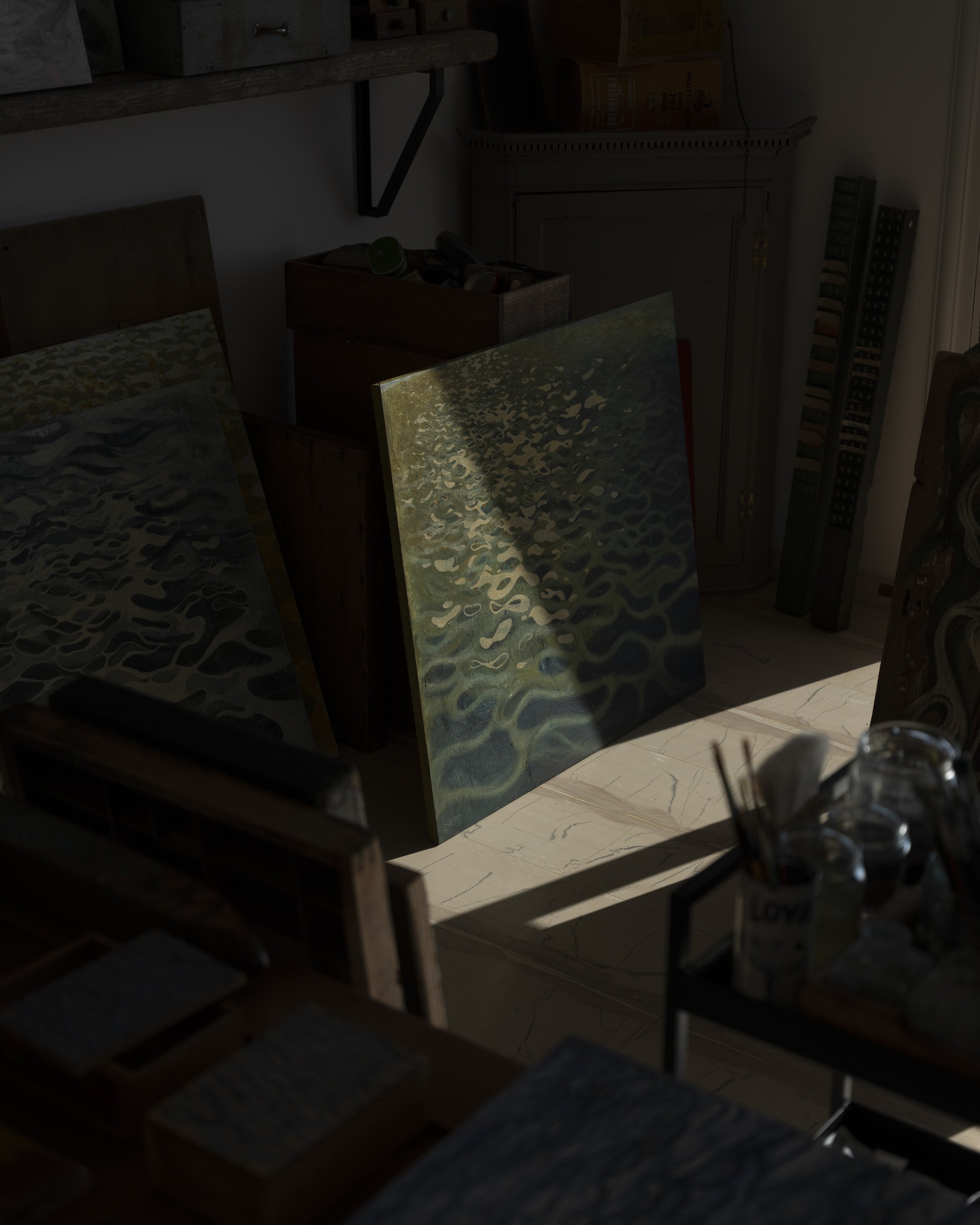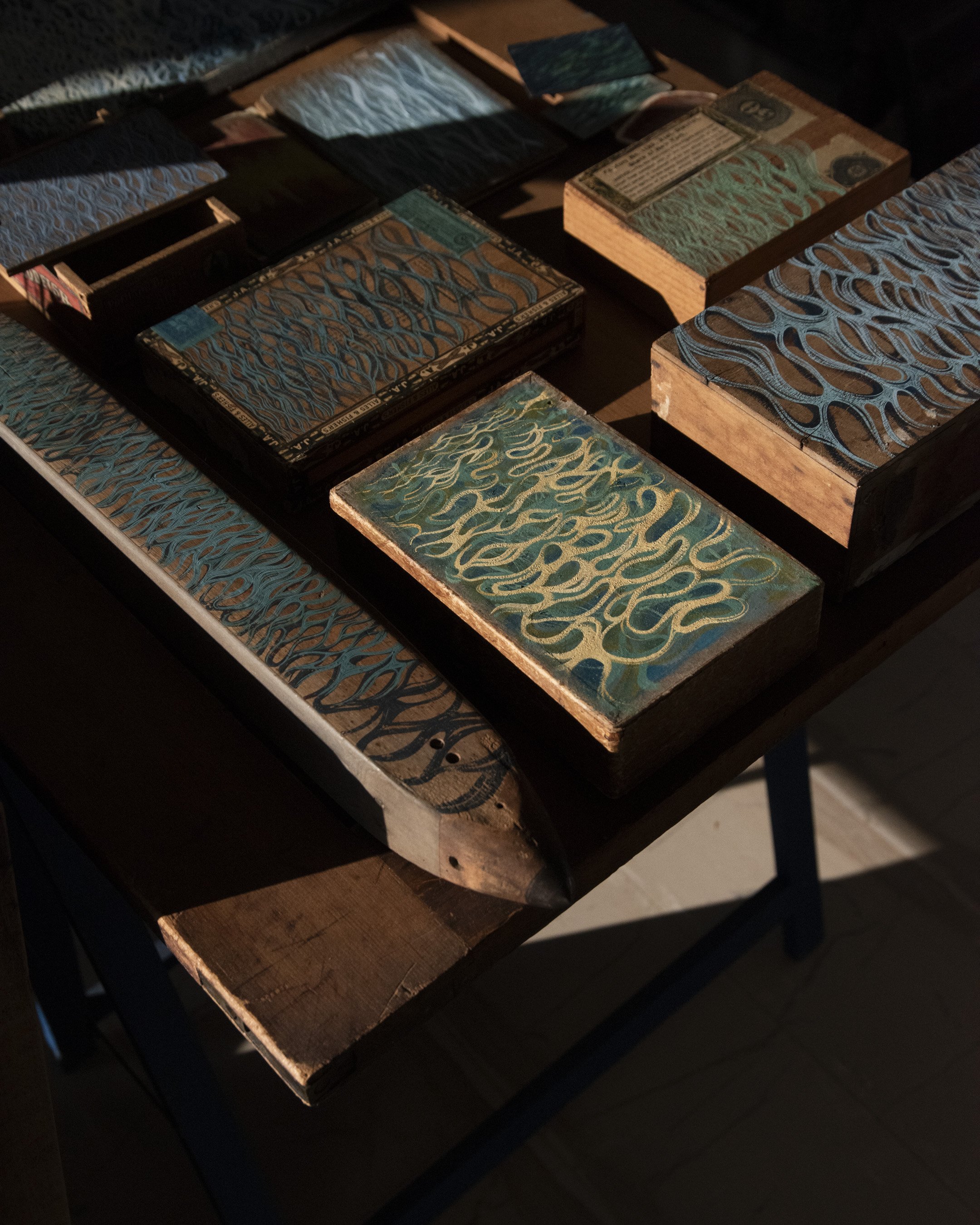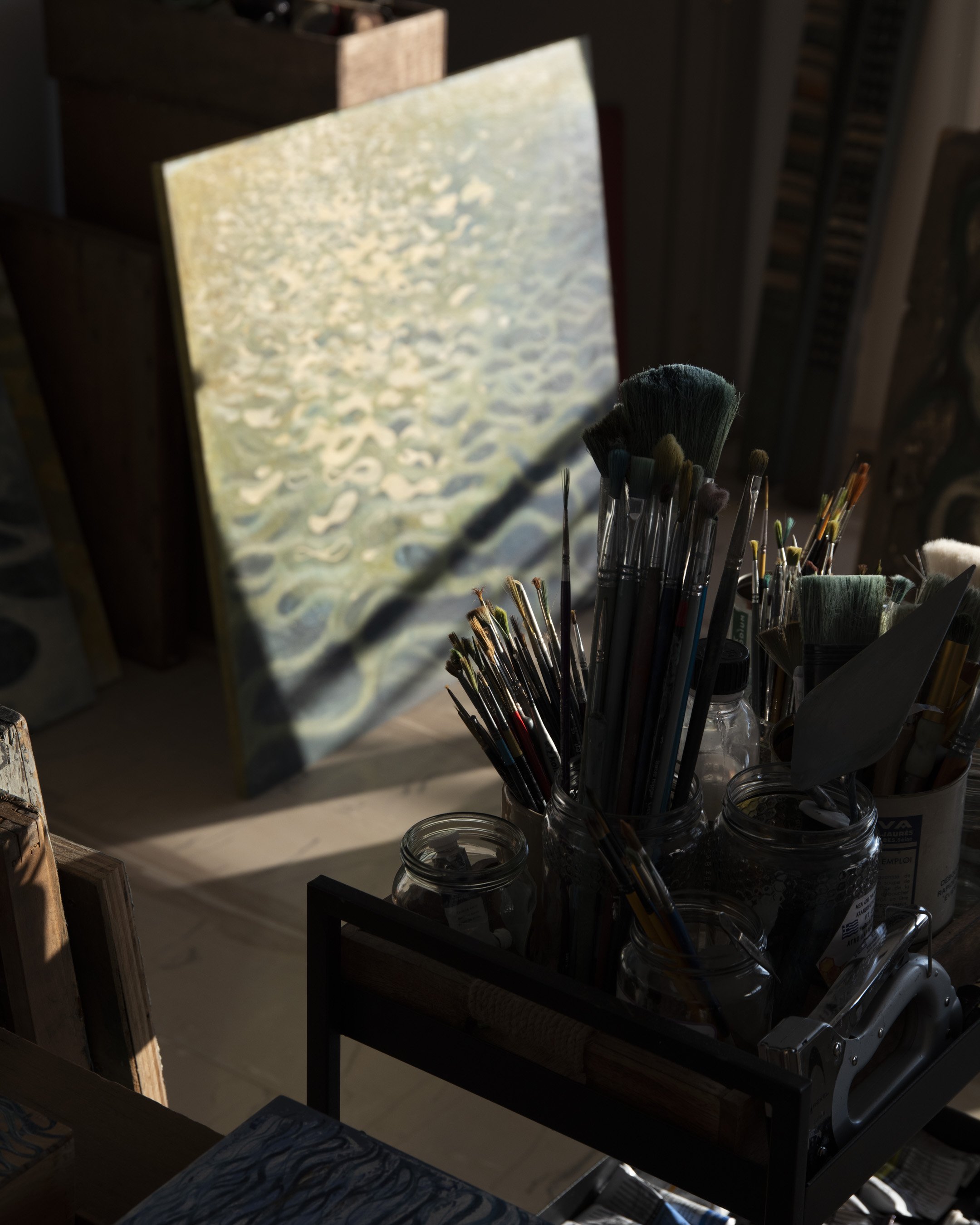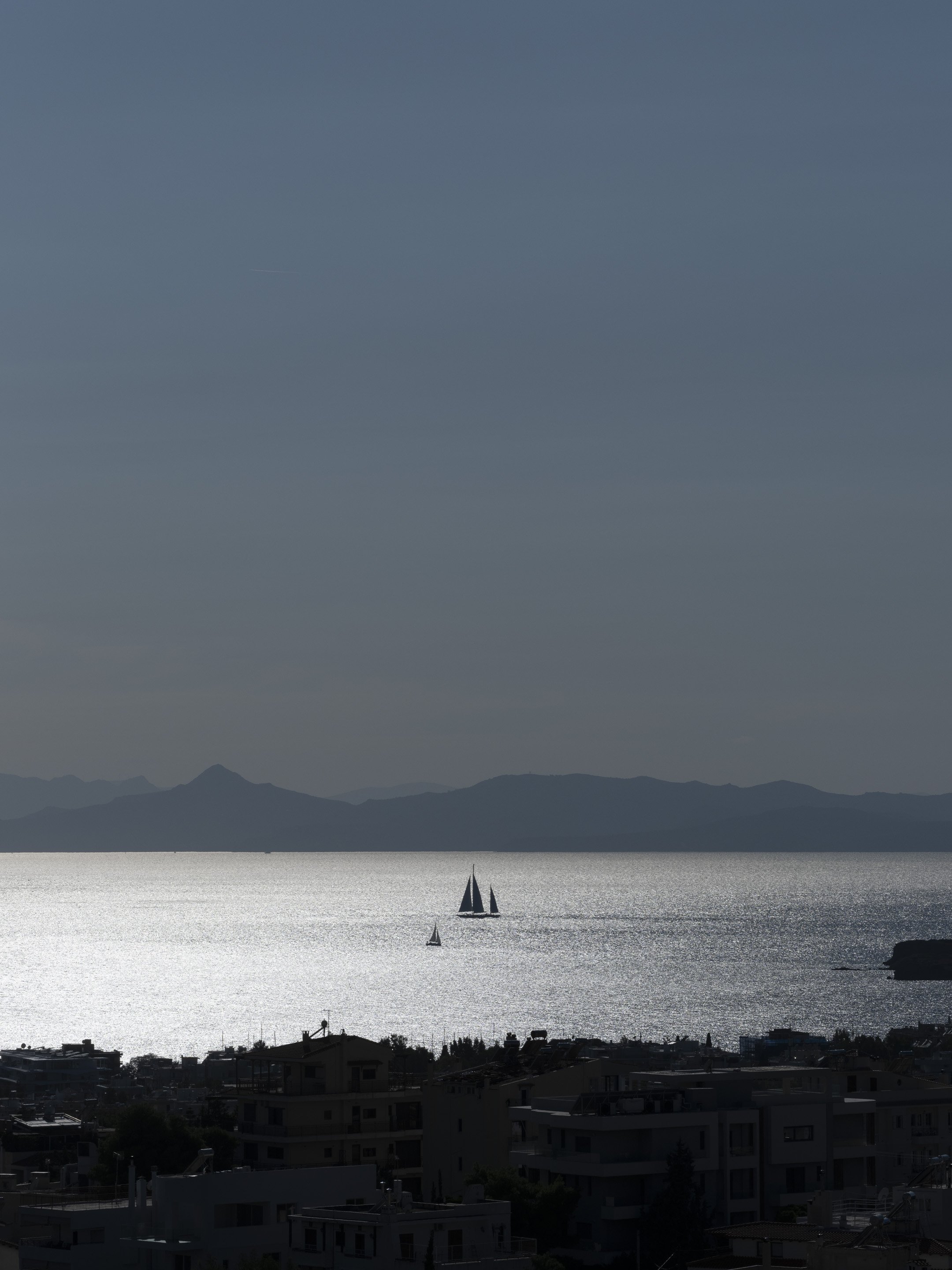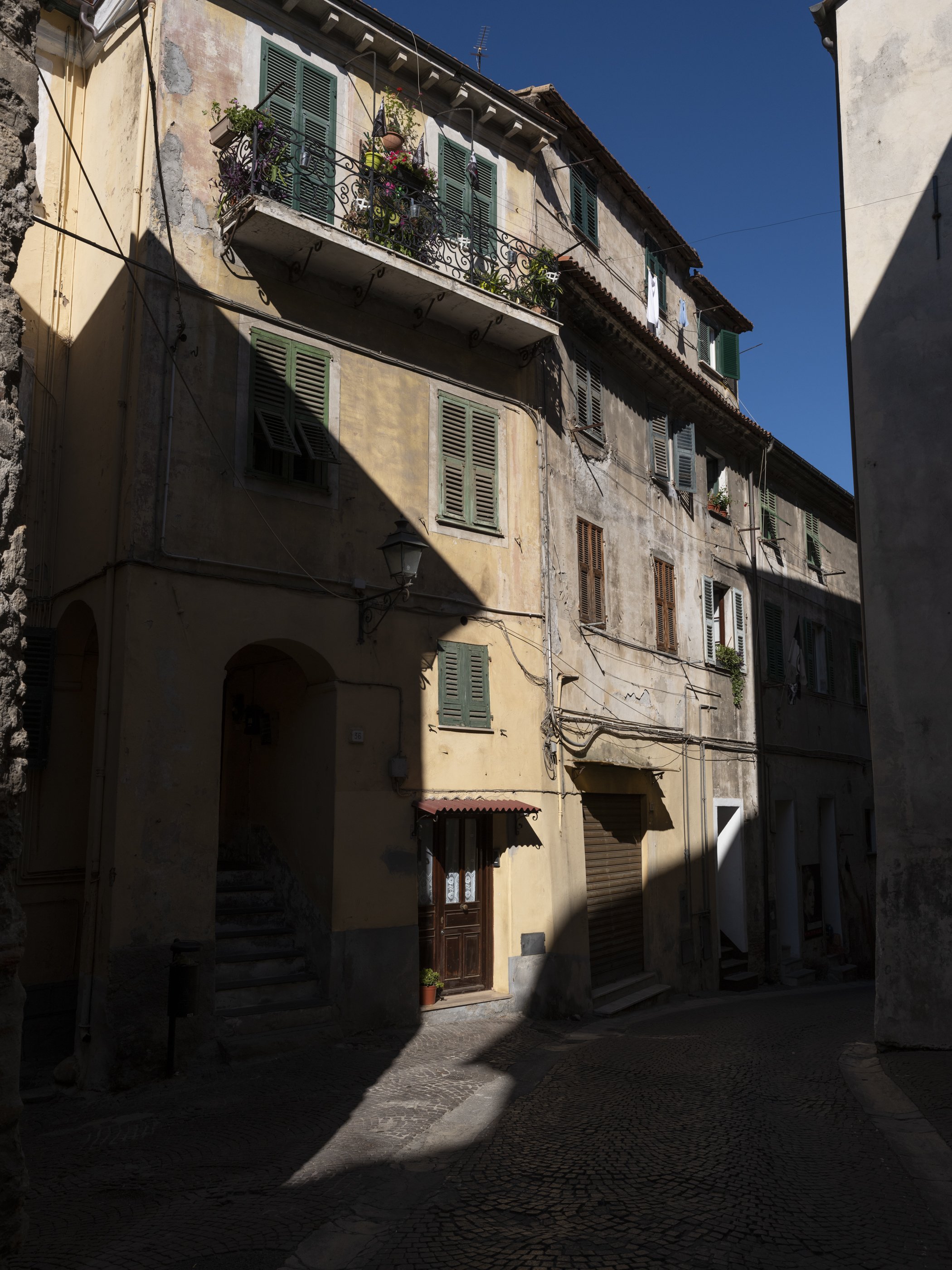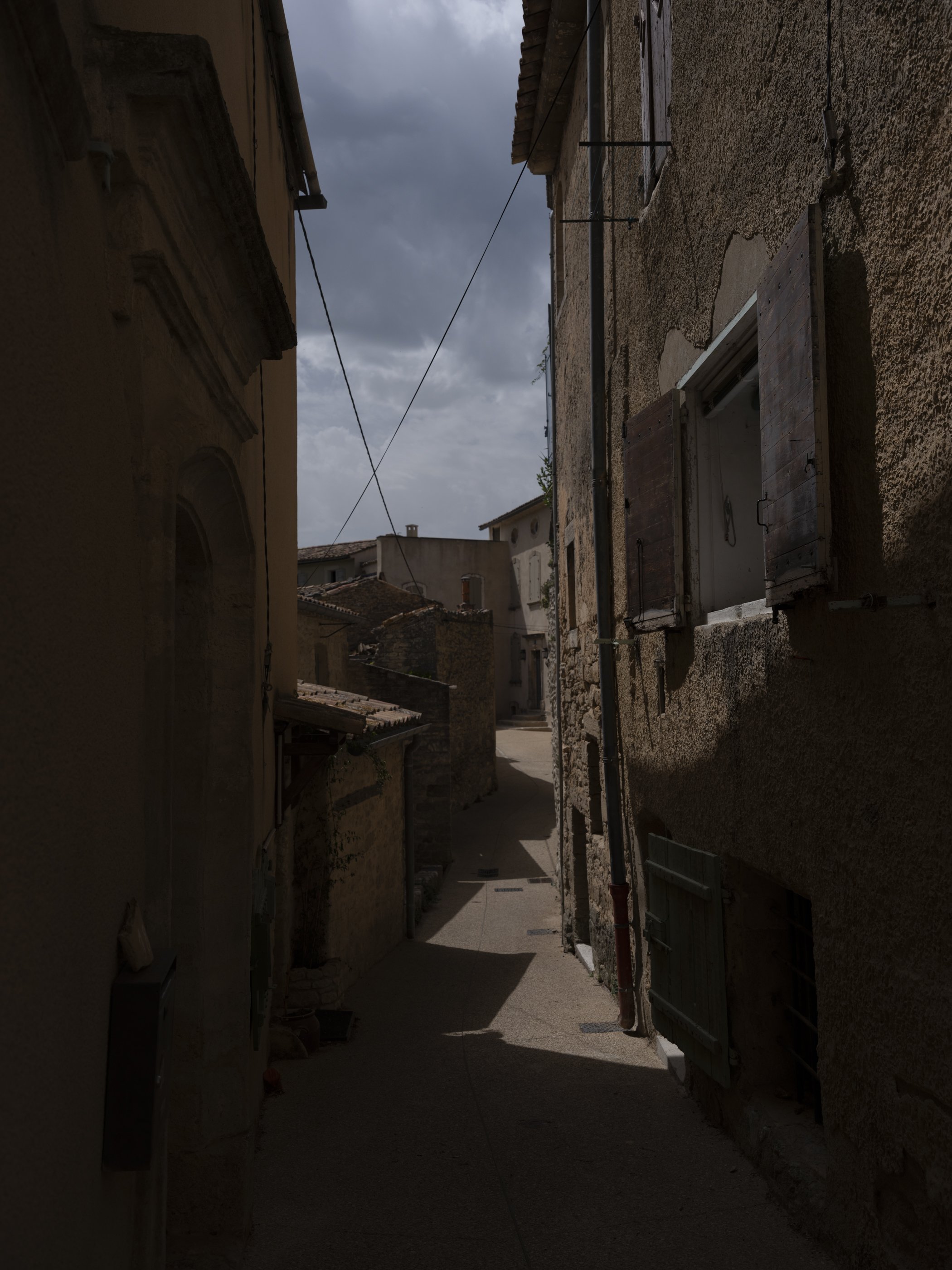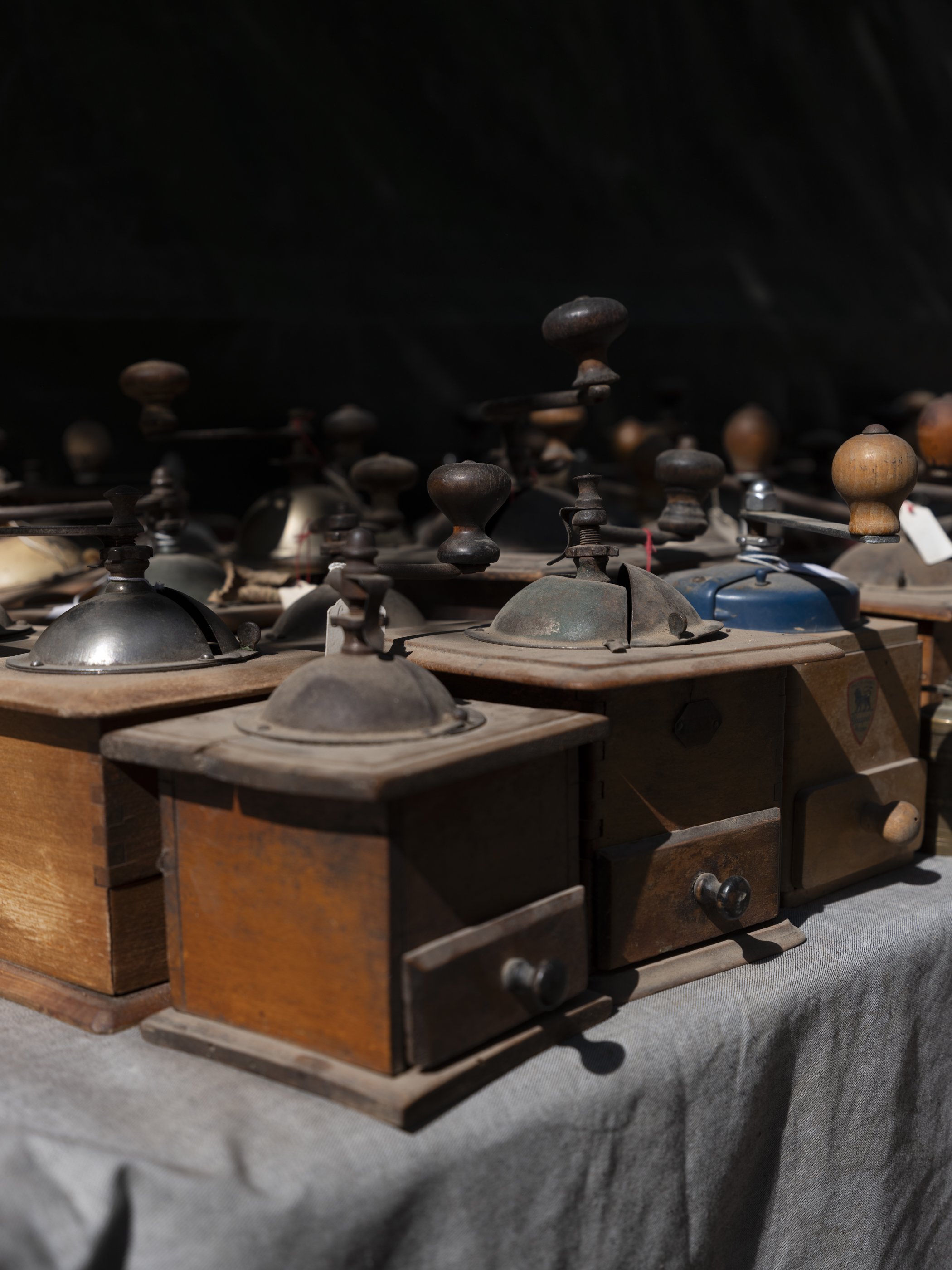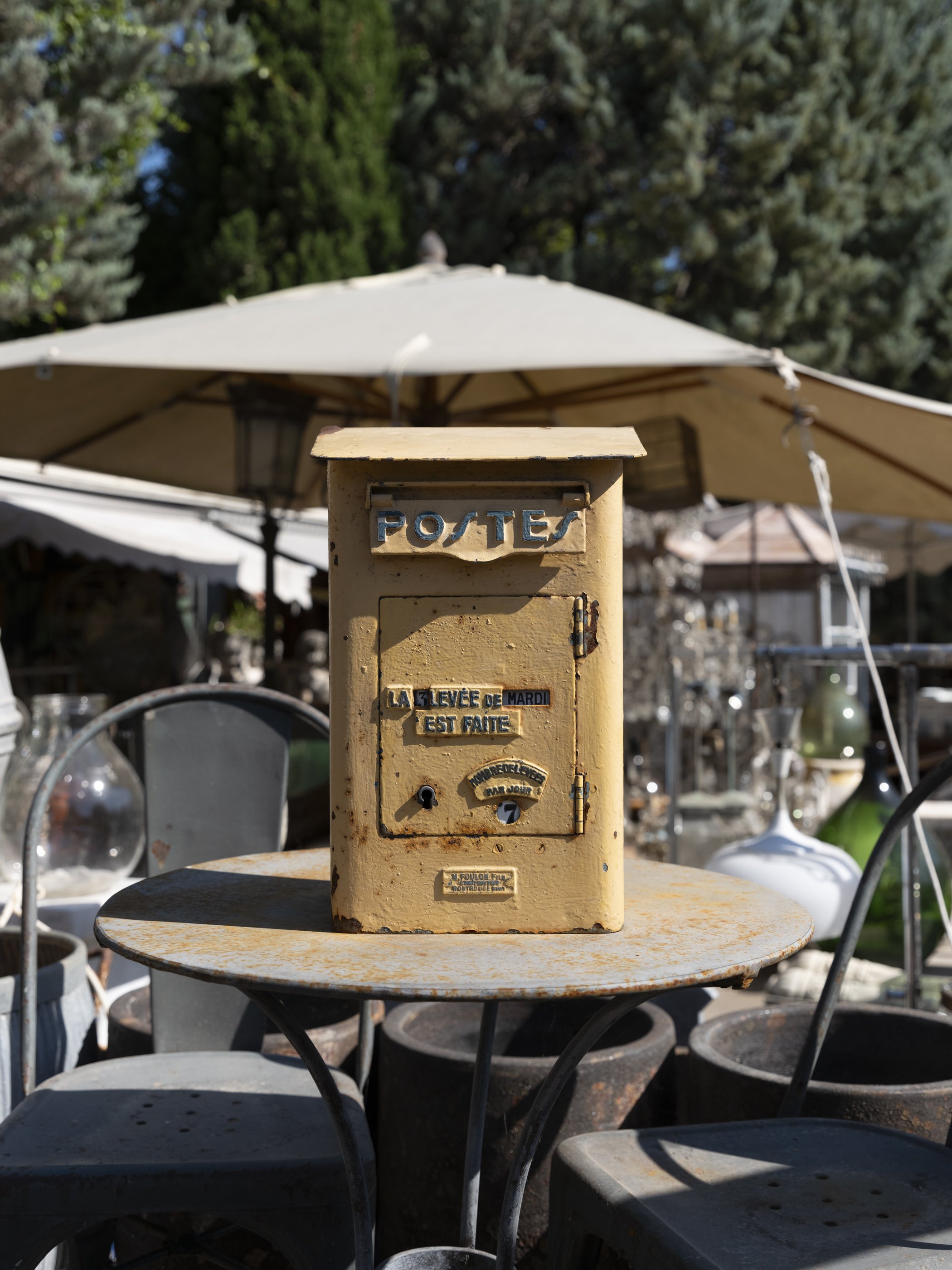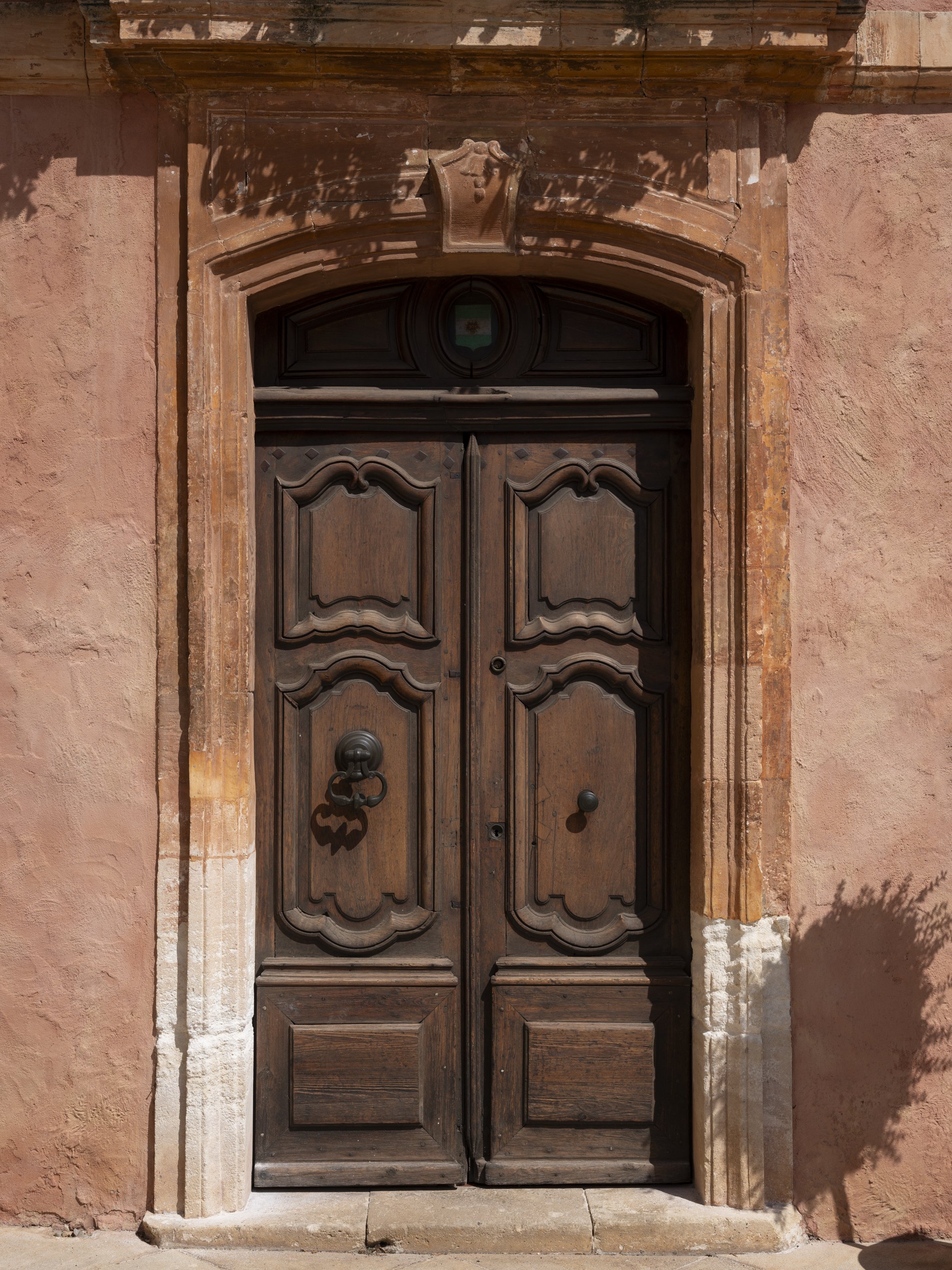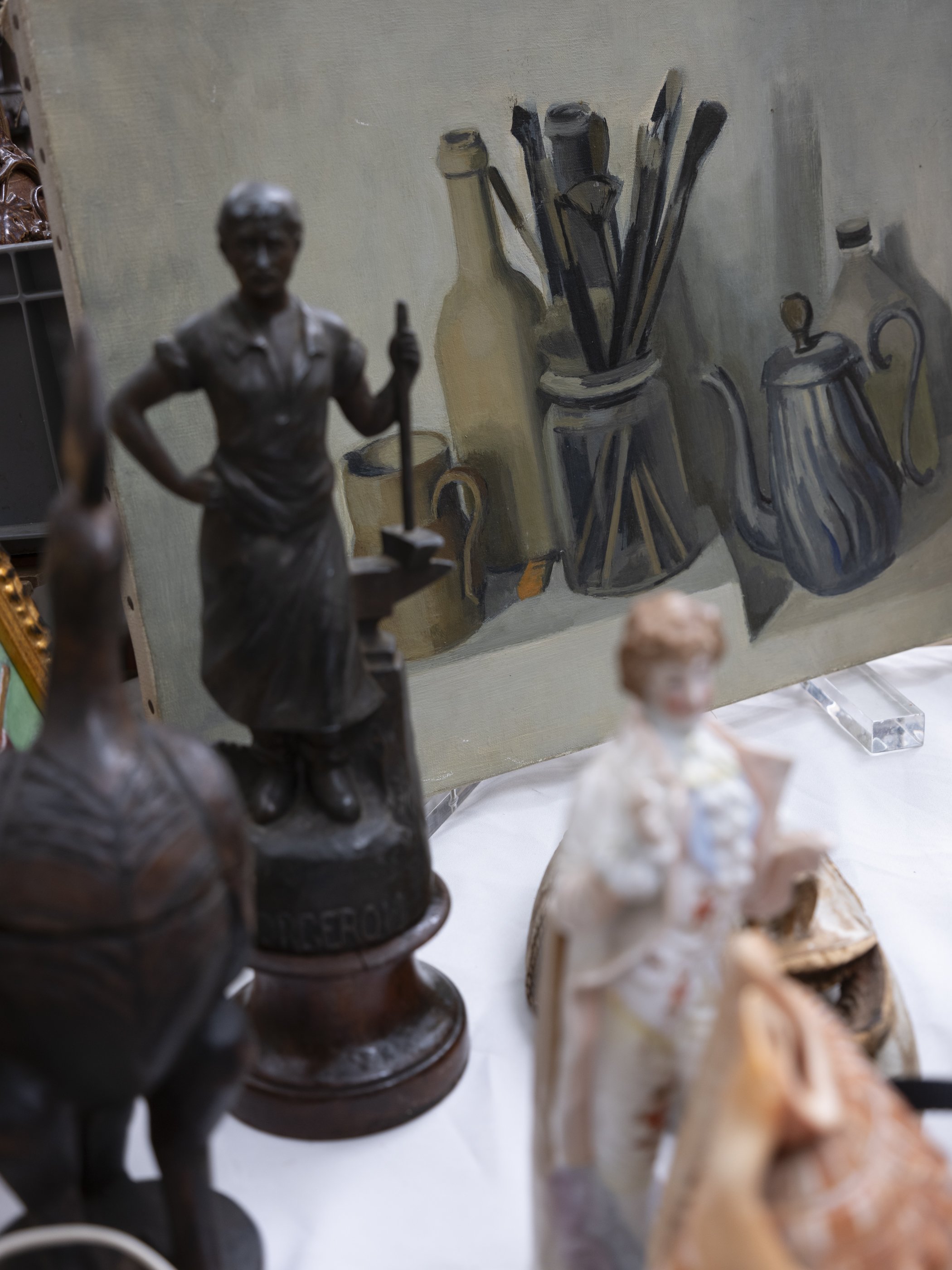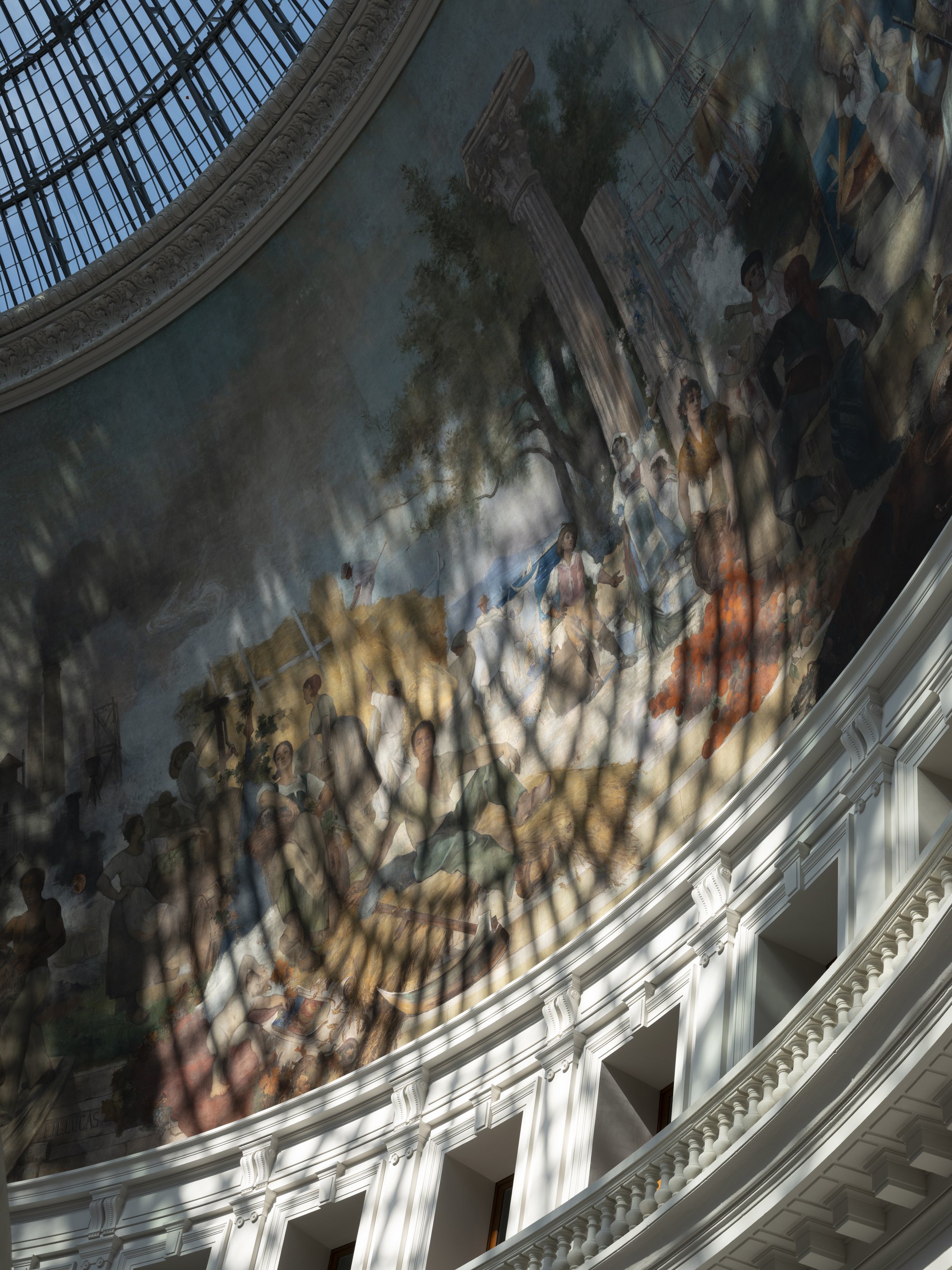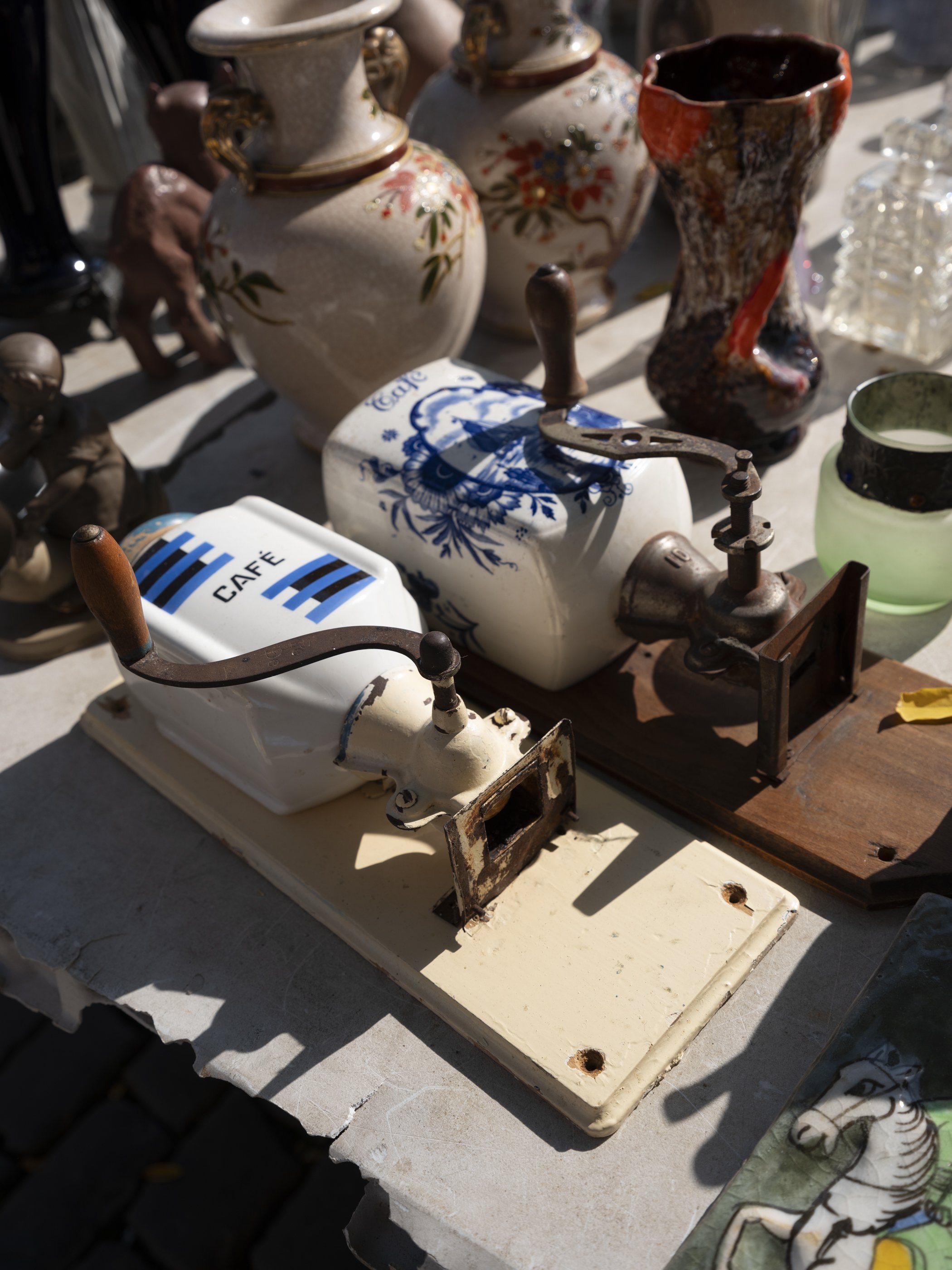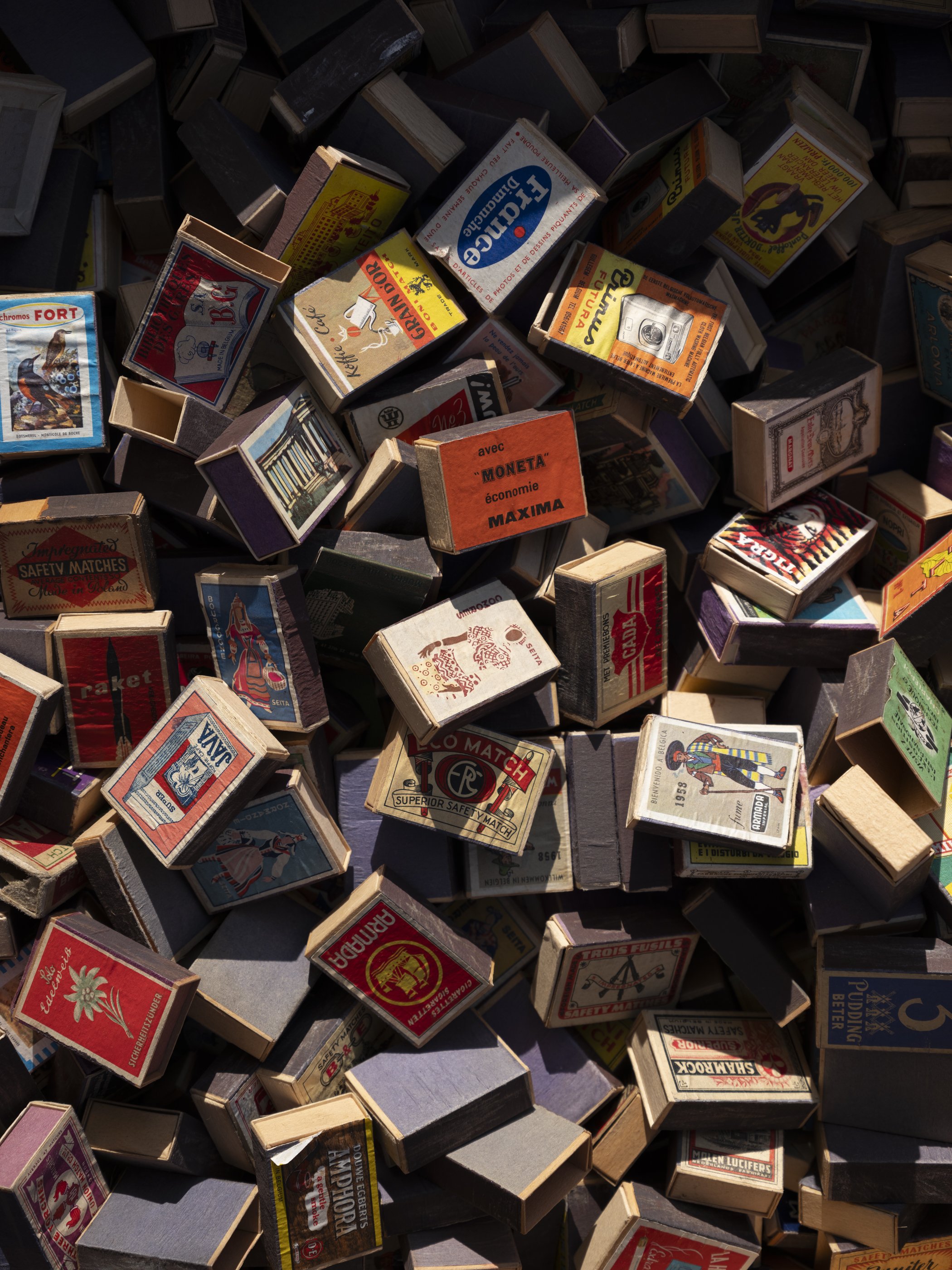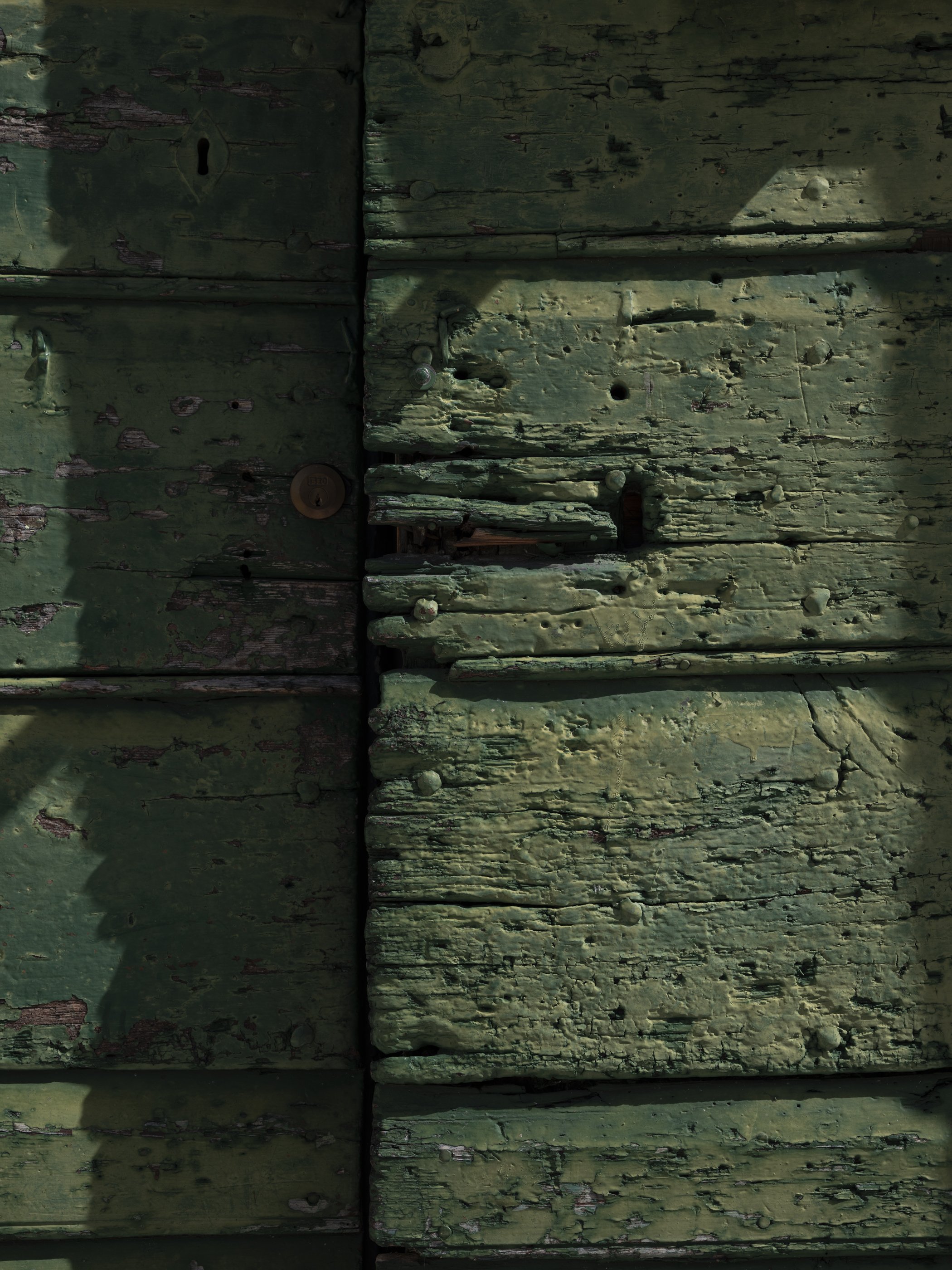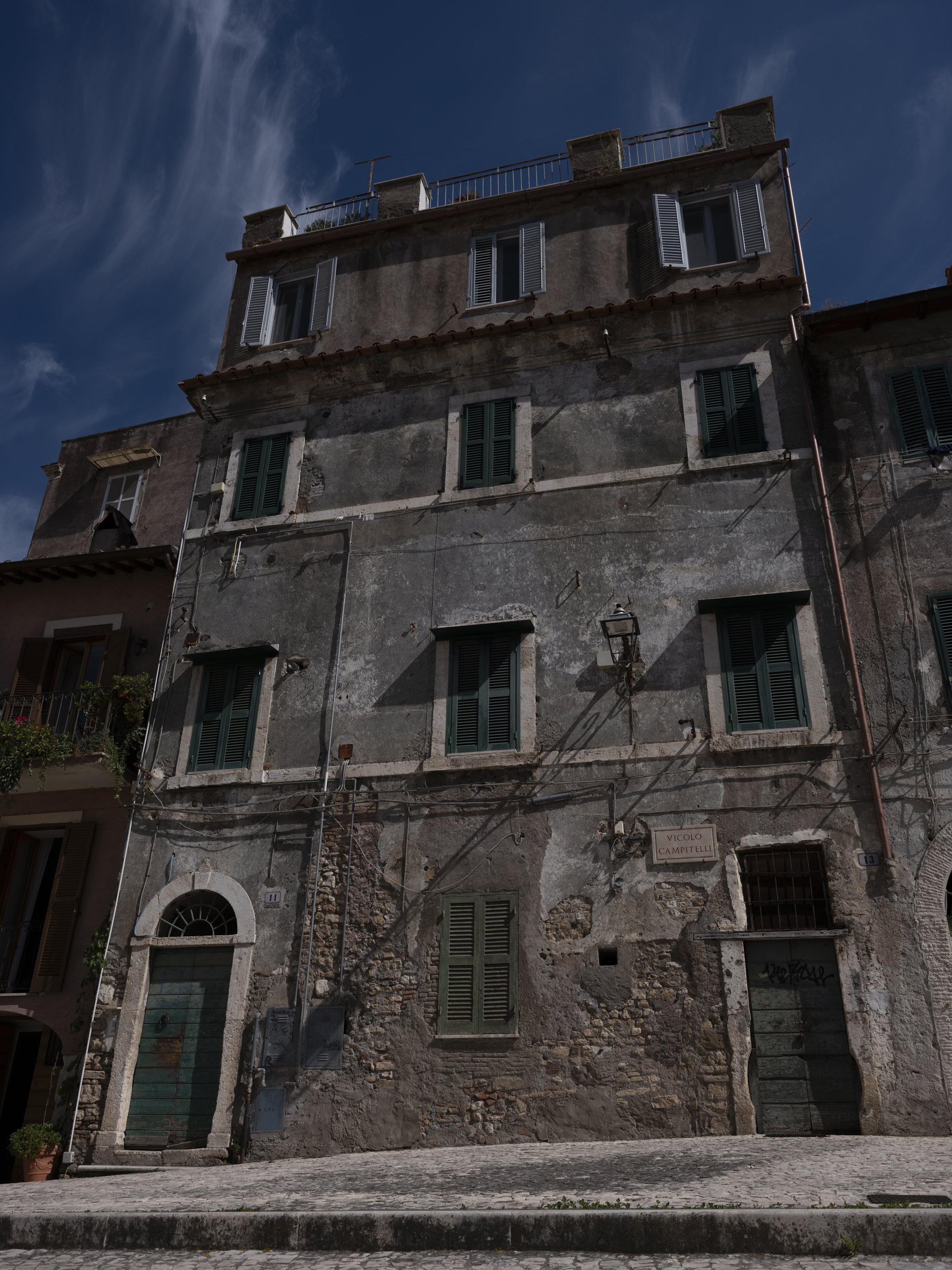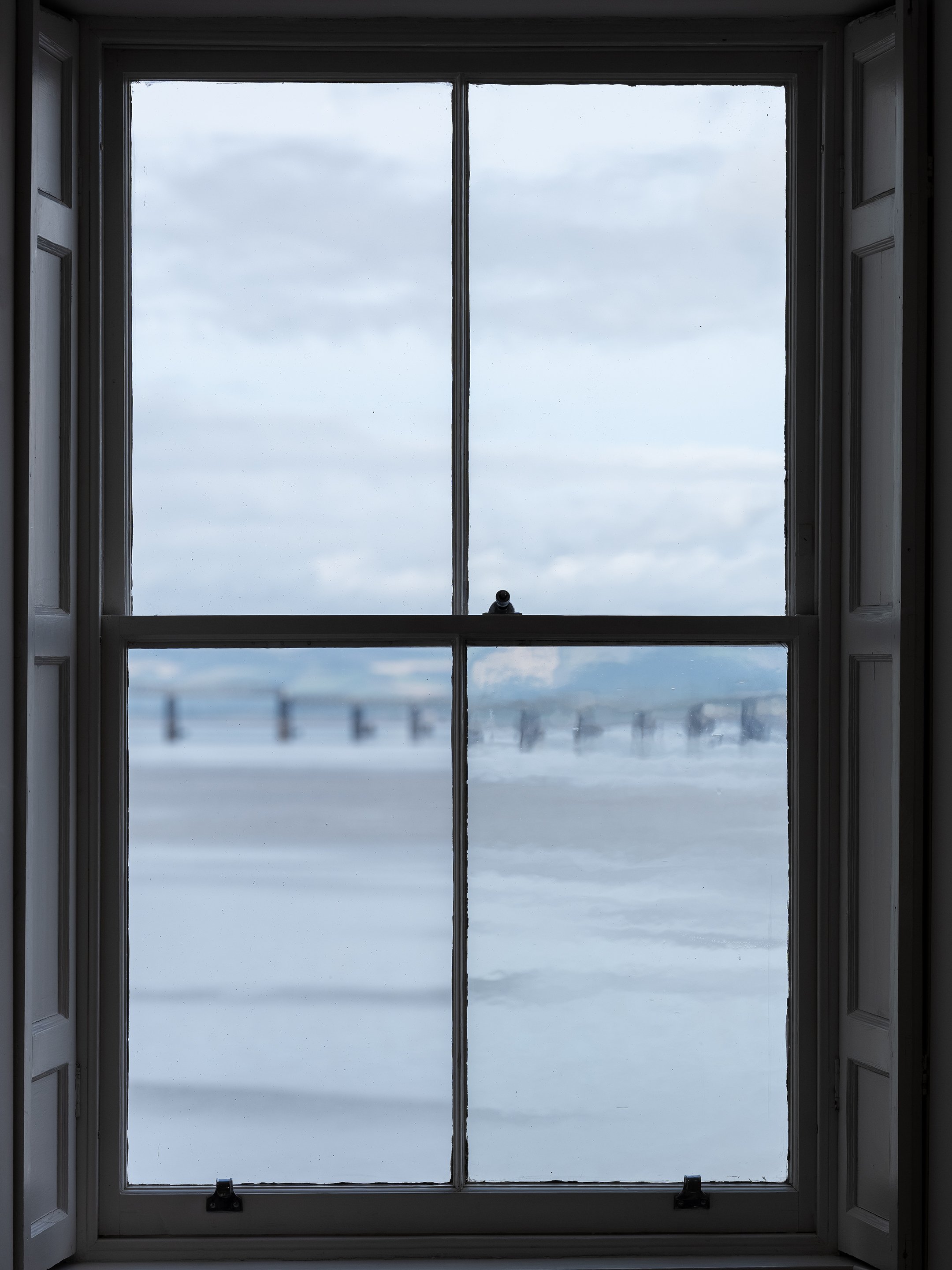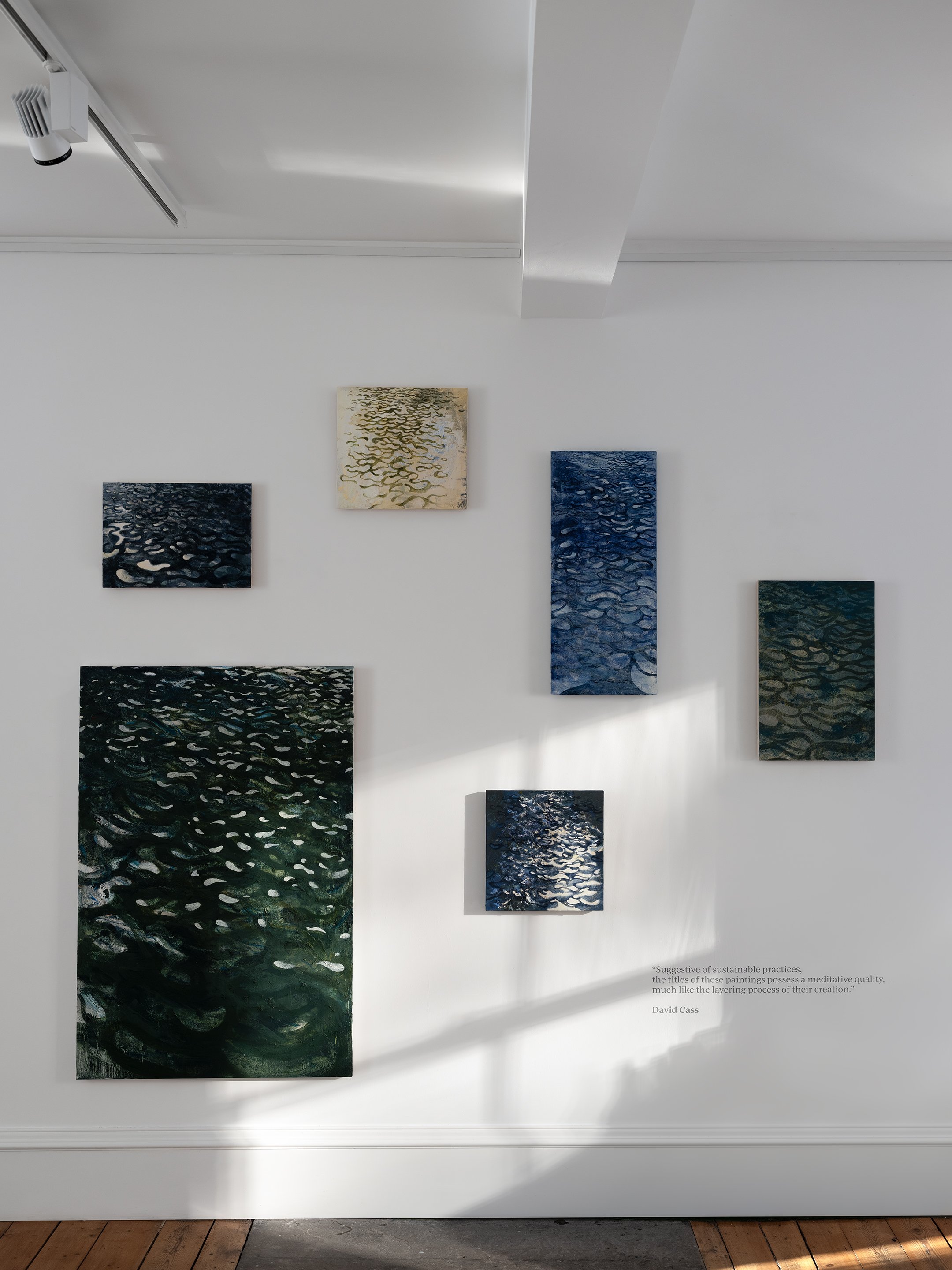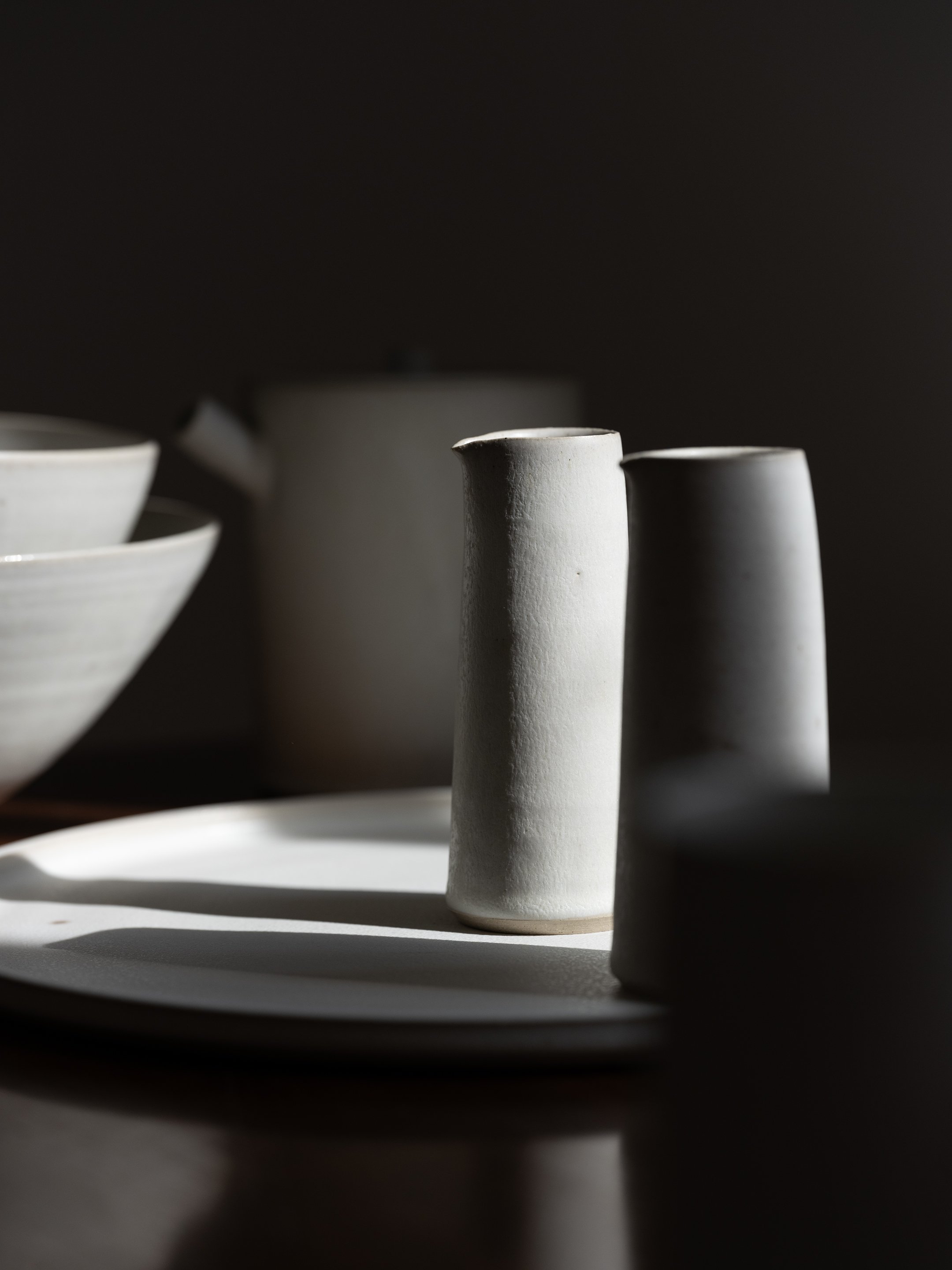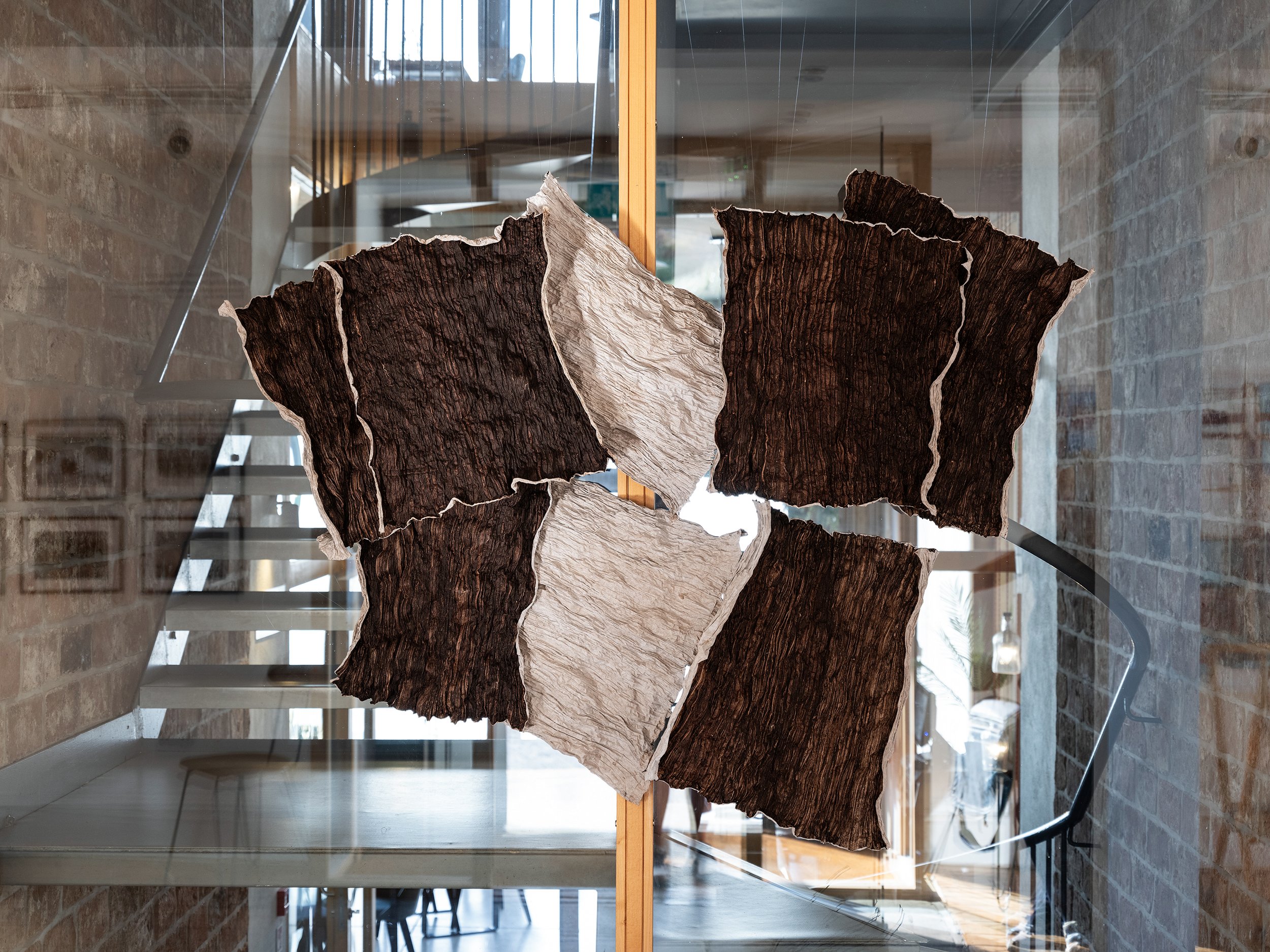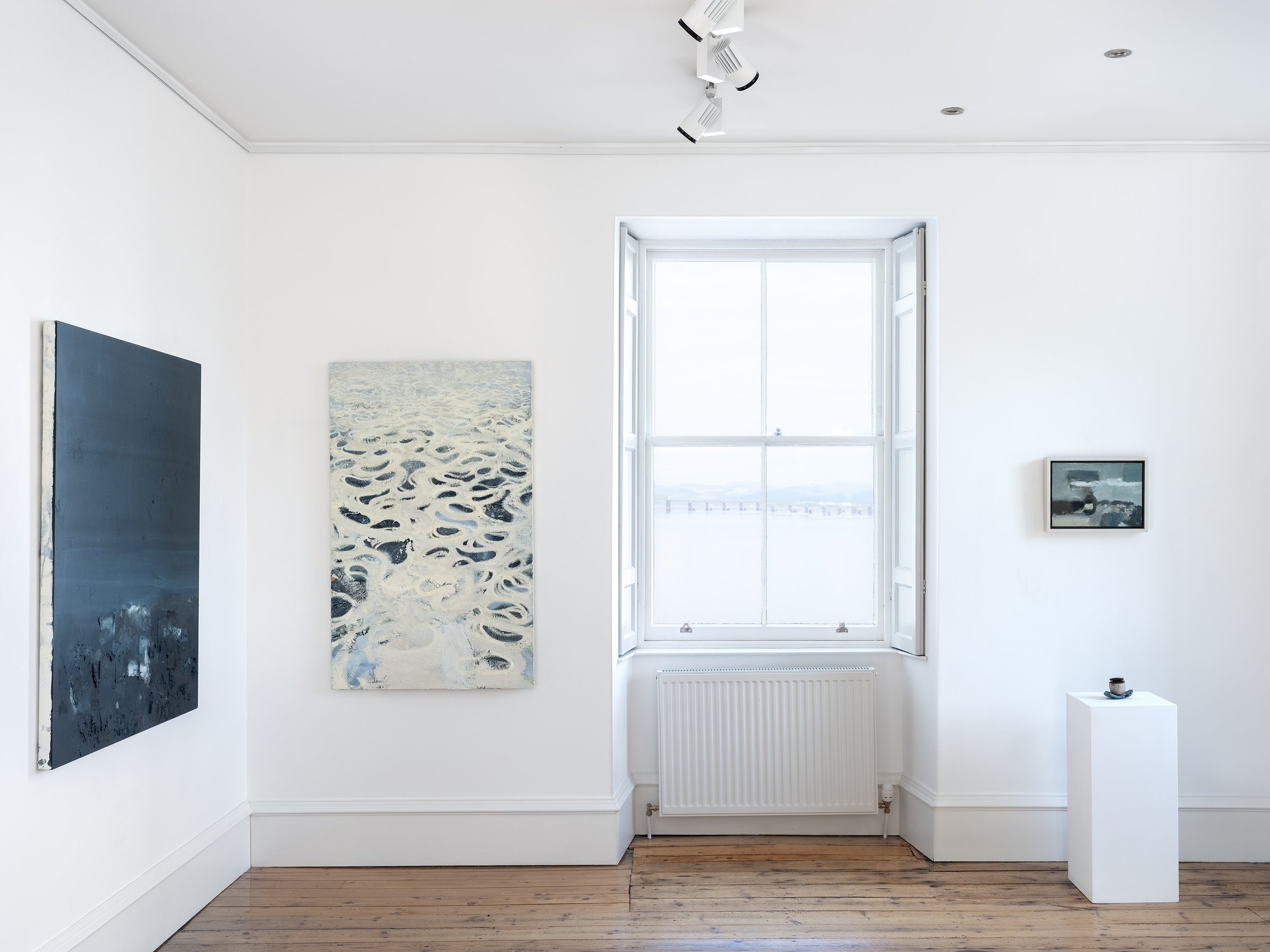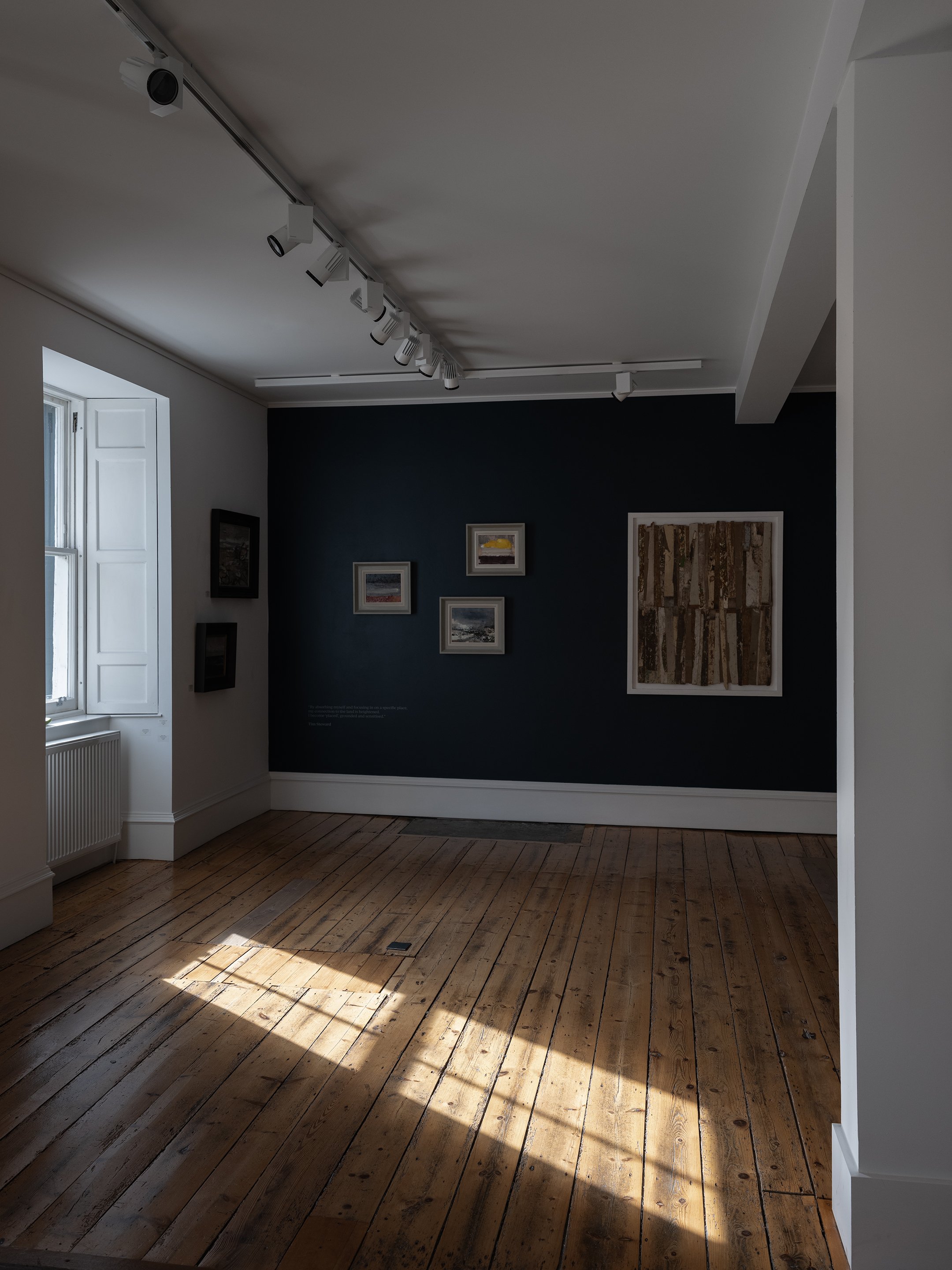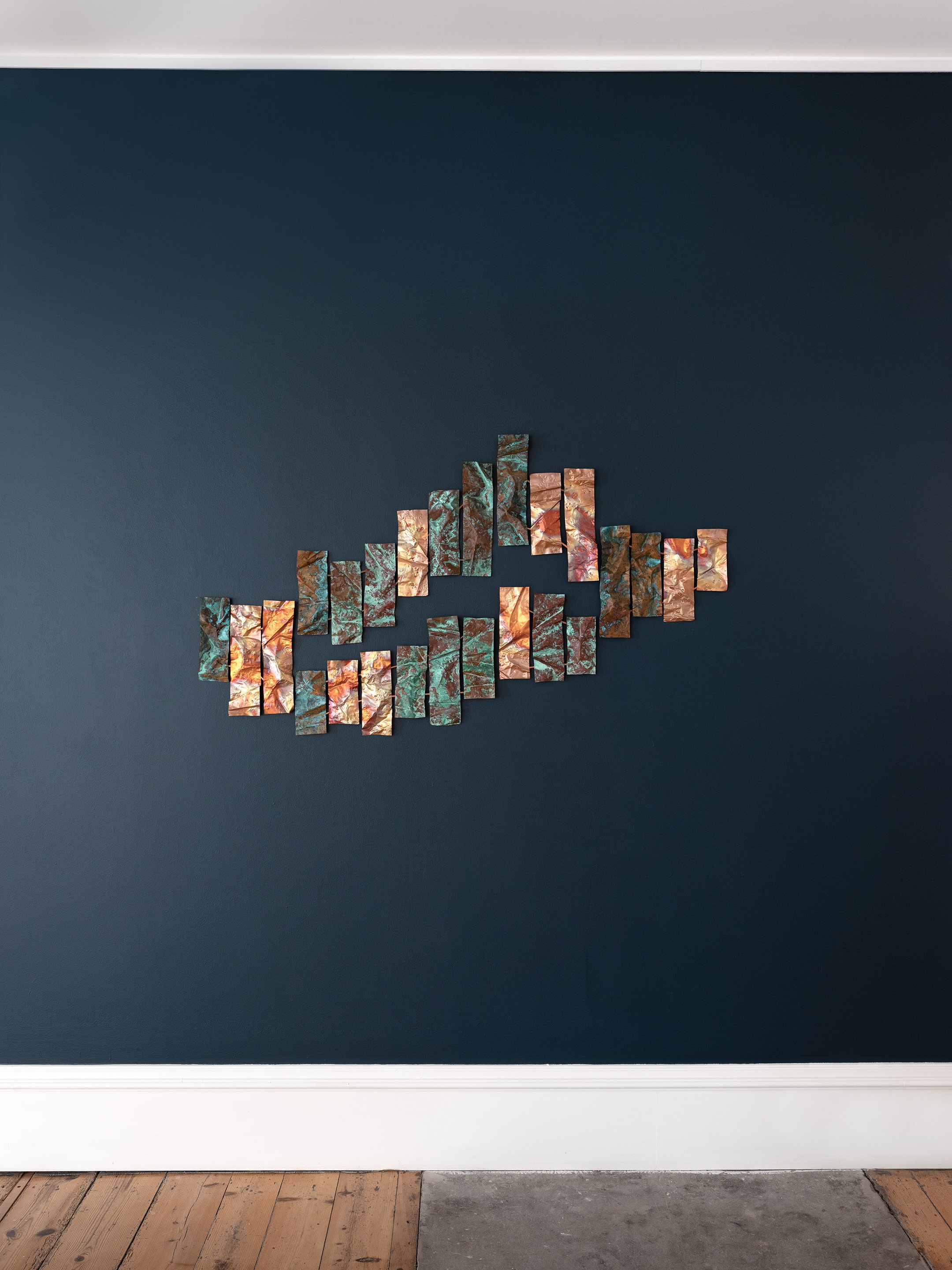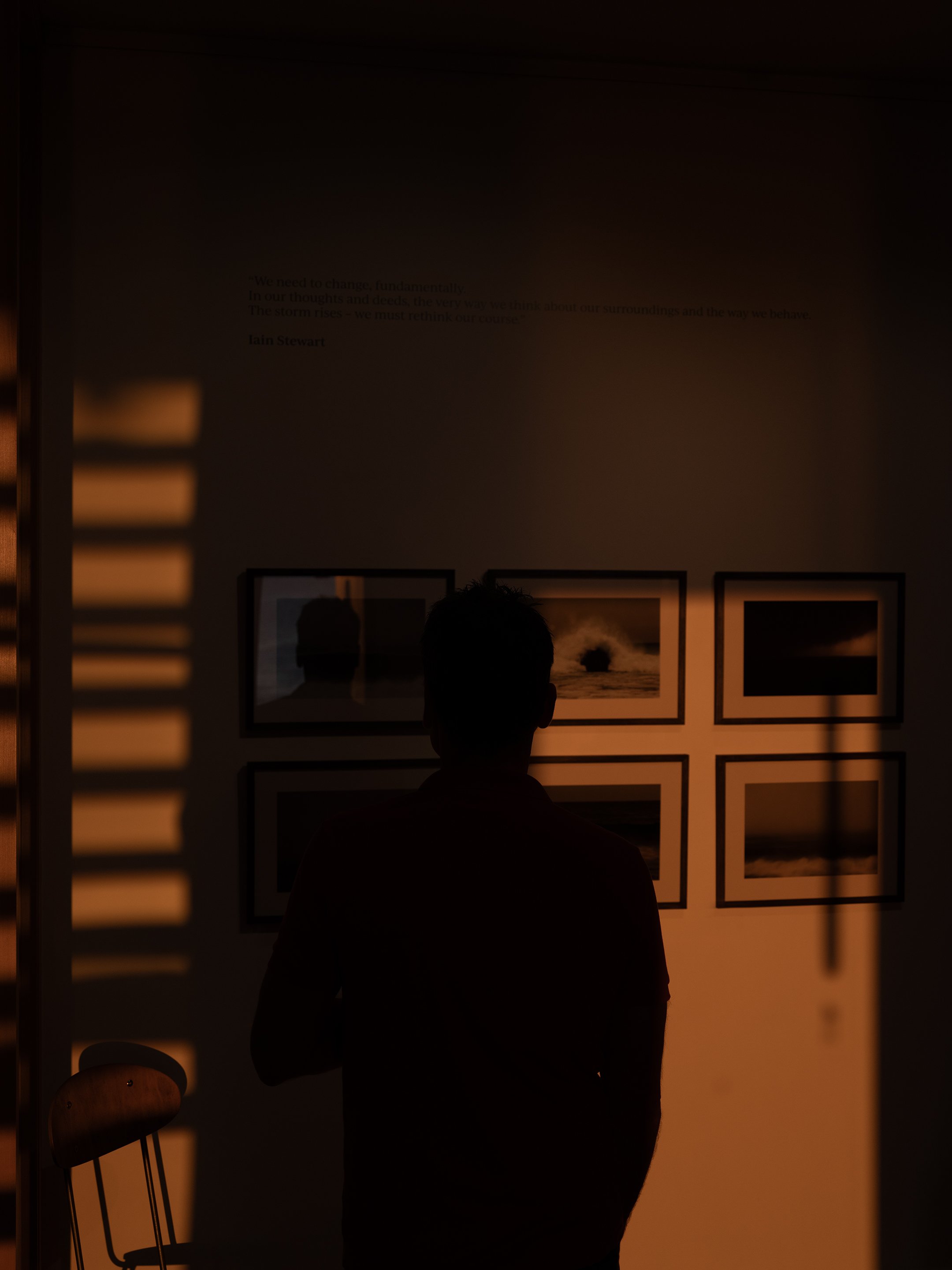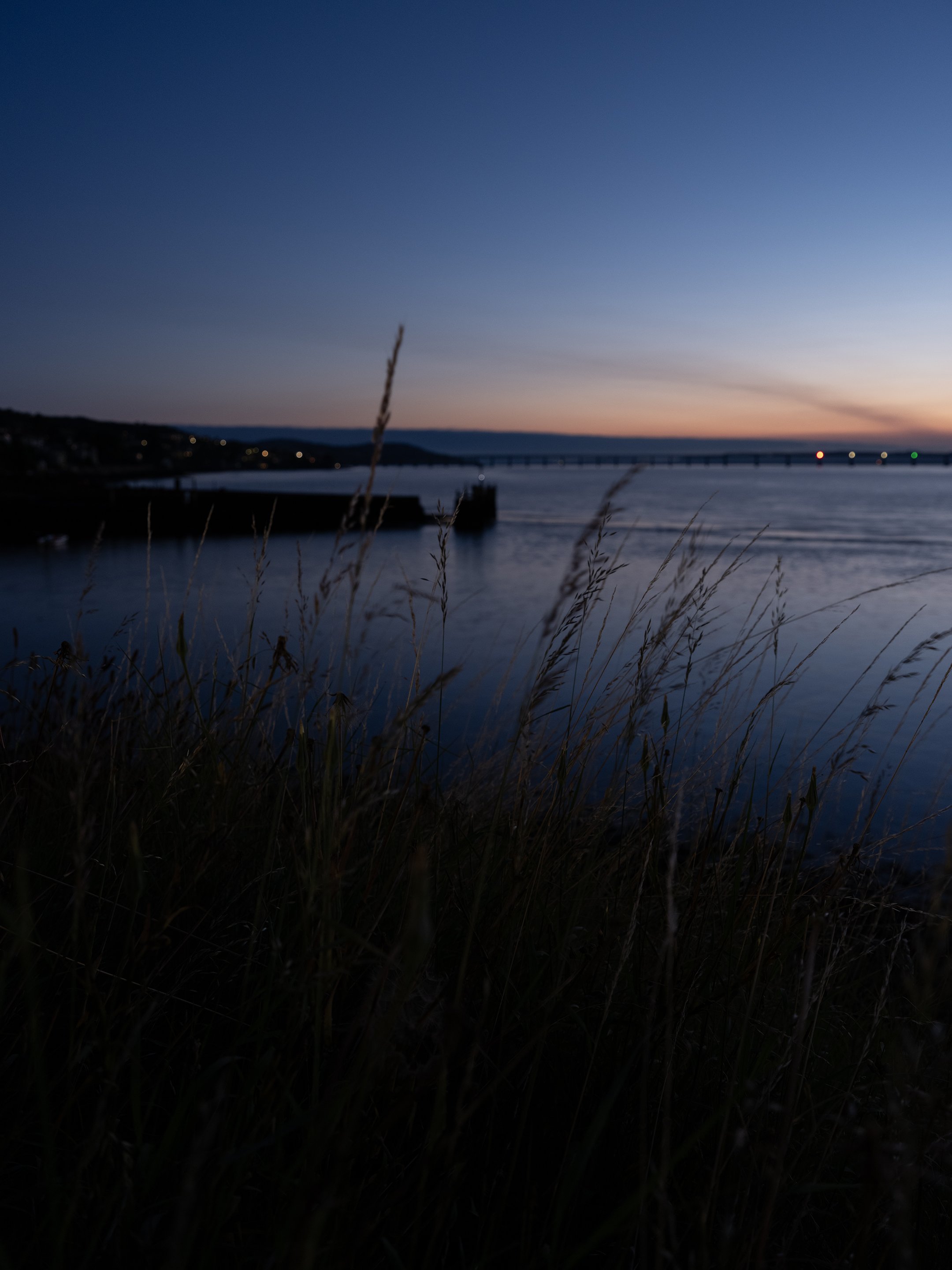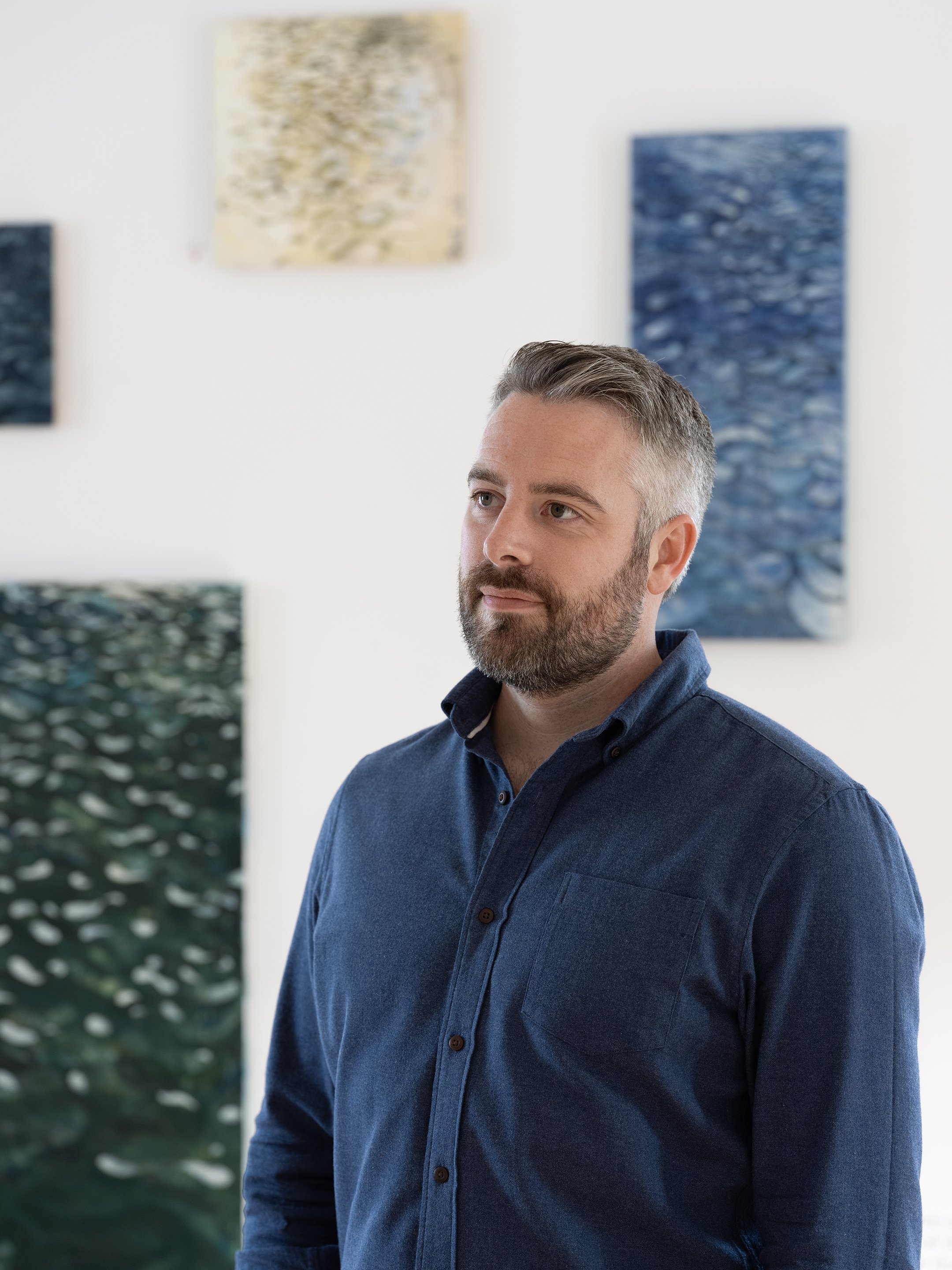A new version of Where Once the Waters – plus selected Light on Water paintings – will be included in the Royal Scottish Academy group exhibition Nature Turns in Edinburgh, themed around seasonal contrasts.
Ice is melting and sea levels are rising at rates far beyond natural cycles, turning established rhythms on their head. We can no longer rely on predictable oceanic or cryospheric patterns. In this iteration of Where Once the Waters, location-specific sea level data will be placed in dialogue with the rapid retreat of Arctic ice.
Over the past six years I’ve made a series of installations and audience-engagement projects that offer personalised perspectives on rising sea levels. Ahead of the exhibition in Edinburgh, here is an outline of how two strands of my practice have developed and come together to form the foundation for a new installation.
Intrigued by the wide variations in sea-rise globally, I’ve reached out regularly to scientists, academics and oceanographers over the last few years, to gather localised insights. The resulting readings – which mostly take the form of coastal measurements – are presented to participants of my Where Once the Waters series as personalised letters. True to my found-object based practice, the letters are typed on vintage and antique papers using a manual typewriter. I began collecting data (and participants) in 2019 and continue to update the project using the latest available data.
Sea levels are now rising beyond previously recorded natural fluctuations. The loss of ice – particularly at our Earth’s poles – contributes to this in two main ways: meltwater from land ice adds directly to ocean volume, and the reduction of reflective sea-ice causes water to absorb and store more heat, which in turn produces thermal expansion. The letters explain these processes, offering information relevant to participants’ birthplaces.
The upcoming letter installation at the Royal Scottish Academy will take the shape of an Arctic aerial view and is informed by recent digital work TILL, which uses collaged antique papers to chart long-term ice loss. Typed letters will be mounted on sheet-metal panels in the gallery, fixed at the top with magnets. Following the design of TILL, the papers (letters) will represent ice-cover and the dark steel backing will symbolise sea. Over the course of the exhibition letters will be removed, so the map visibly erodes – an aerial timeline of ice extent from the late 1800s to today.
The piece will bring together the mapping of TILL with the letter installations of Where Once the Waters, combining cause and effect within a single, evolving work.
Lower Galleries, The Royal Scottish Academy, Edinburgh
December 6th 2025 – January 18th 2026


